
Abstract
China SBS winter census is conducted annually to assess the distribution and population of this critically endangered species. This year, the census was conducted on January 15-18, covering most of the SBS wintering sites from Hanghzou Bay in the north to Beibu Gulf in the southwest. We recorded a total of 61 SBS individuals during the 2021 winter census, taking up 8% (or more if global population lower) of the global population (773 individuals of all ages, Green et al. 2021). The largest wintering site is Leizhou Peninsula, where 33 individuals were recorded.
Introduction
Spoon-billed Sandpiper Calidris pygmaea is categorized as Critically Endangered on the IUCN Red List since 2008. It breeds on coastal tundra in the north-east Siberian Arctic and sub-Arctic zones, molts in the Yellow Sea region (Yang et al., 2020), and migrates to south-east Asia in the middle of the non-breeding season (Chang et al. 2020). Until recently, the estimated world population size of SBS was 490 mature individuals (95% CL =360–620) and 773 individuals of all ages (95% CL = 569–978), declining at a rate of 9% per year during 2009–2016 (Green et al., 2021).
Systematic winter census in China started from 2019, organized by Spoon-billed Sandpiper Conservation Alliance. Each year, over 100 observers from more than 20 organizations participate in the survey, making also good use of increased public awareness raising at the same time as well. This report presents the result of the census undertaken in January 2021.
Methods
The methodology of this census has been the same as the previous year. Census was held in mid-January when wintering population is relatively stable. The dates scheduled coincided with the overall winter census organized by the SBS Task Force and with the spring tides in Leizhou. All counts in the census were made with binoculars and telescopes, and the survey time varied at different sites depending on local condition. Most of the survey were made on the mudflat at lower tides, artificial high tide roosts were also scanned when allowed.
Results
We recorded a total of 61 SBS individuals in China (Fig. 2). This figure shows a 24% increase from the previous winter (49 individuals). Based on our SBS winter census from 2019 to 2021, we can see a gradual increase in the number of SBS wintering in Minjiang Estuary, Yangjiang, Leizhou Peninsula, Qinzhou, Fangchenggang. Leizhou Peninsula is the largest wintering site in southern China, where in 2021 33 SBS were recorded, taking up 54% of the total count (Table 1).
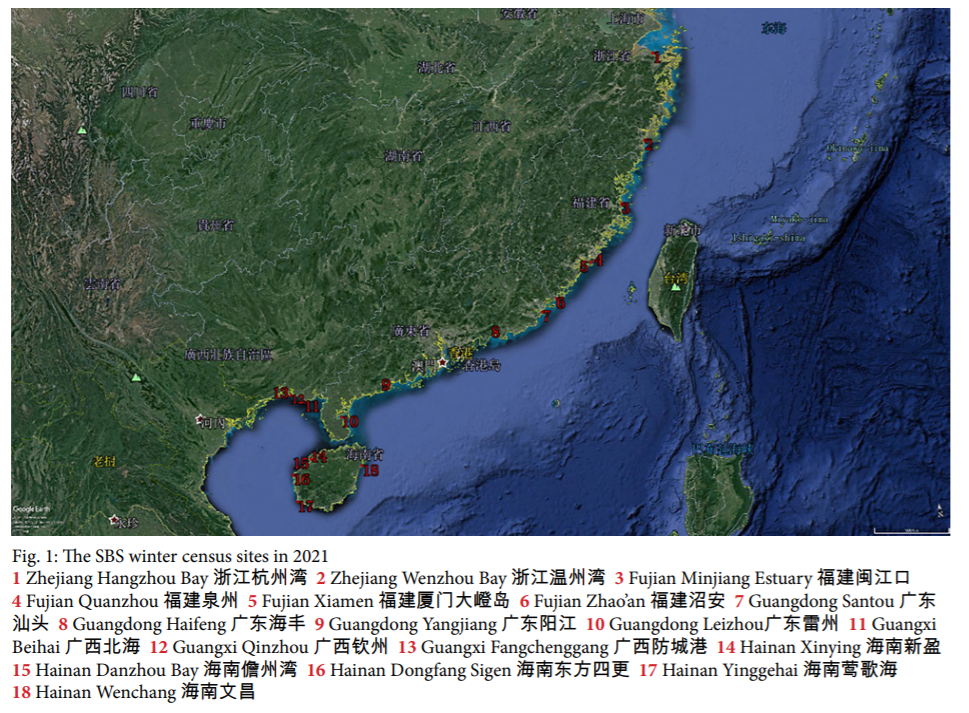
In terms of waterbird abundance, 15 survey sites were home to 80 species of 70,542 waterbirds (Fig. 3, Table 2), of which the waterbird group with the highest abundance was shorebird (accounting for 75%). Lack of whole-waterbirds survey data in Santou, Haifeng, and Hangzhou Bay can explain the decline of waterbirds abundance from 2020 to 2021. A total of 60,000 waterbirds were found at the 12 sites where a whole waterbird survey was conducted in both 2020 and 2021. Dunlin Calidris alpina, Kentish Plover Charadrius alexandrinus, Black-headed Gull Chroicocephalus ridibundus, Lesser Sand Plover Charadrius mongolus, Greater Sand Plover Charadrius leschenaultii were the most abundant species.
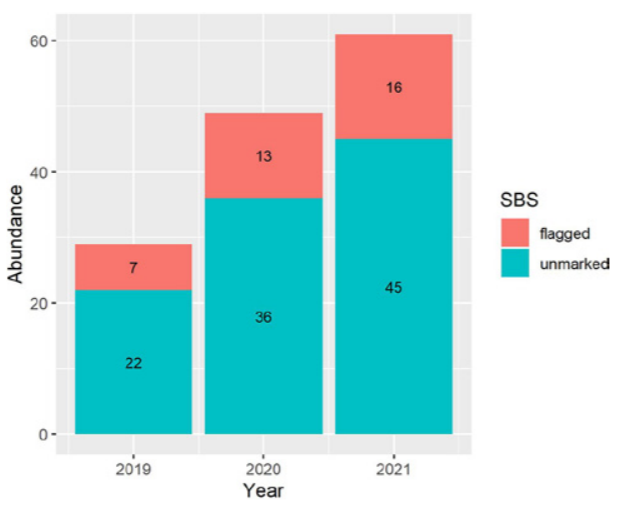
Fig. 2: Summary of SBS winter census 2019-2021. In 2021, we surveyed 18 sites (37 plots), among which 4 plots were added to those of the previous year (18 sites 33 plots), but no SBS were found in those new plots.
Table 1: SBS record in 2021 winter census
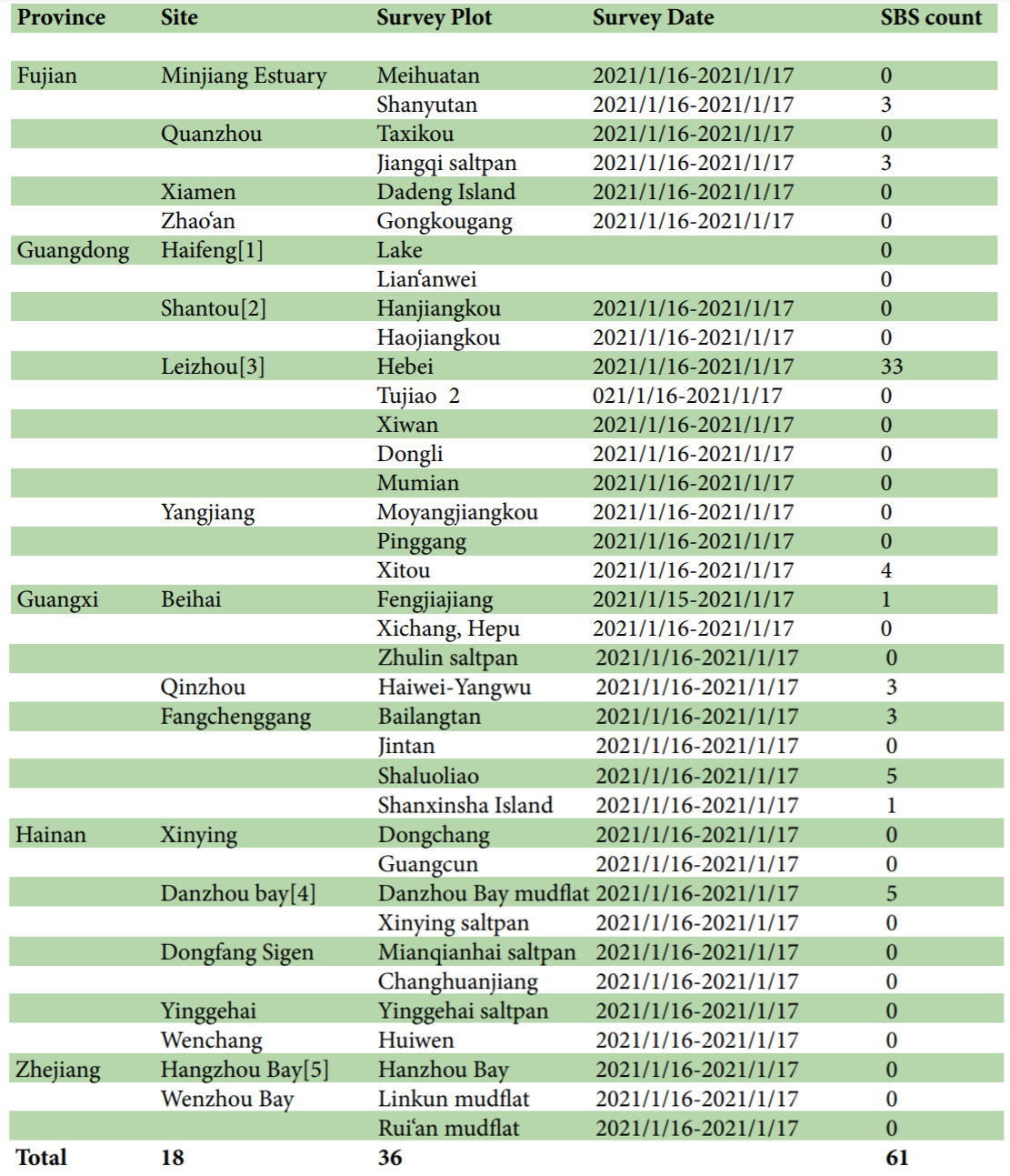
Among the recorded 80 species, five species are listed in the first class protection and nine species in the second class in the National Key Protected Wild Animal List of China. Moreover, one species is listed as Critically Endangered, four as Endangered, three as Vulnerable and seven as Near Threatened in the IUCN Red List.
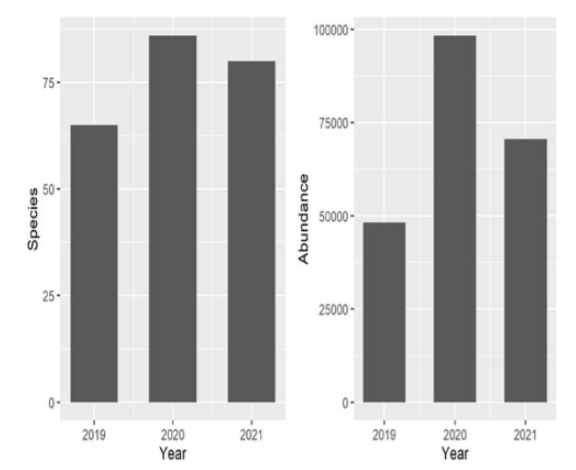
Fig. 3: Summary of SBS winter census 2019-2021
Table 2: Waterbirds abundance at each site in January 2021
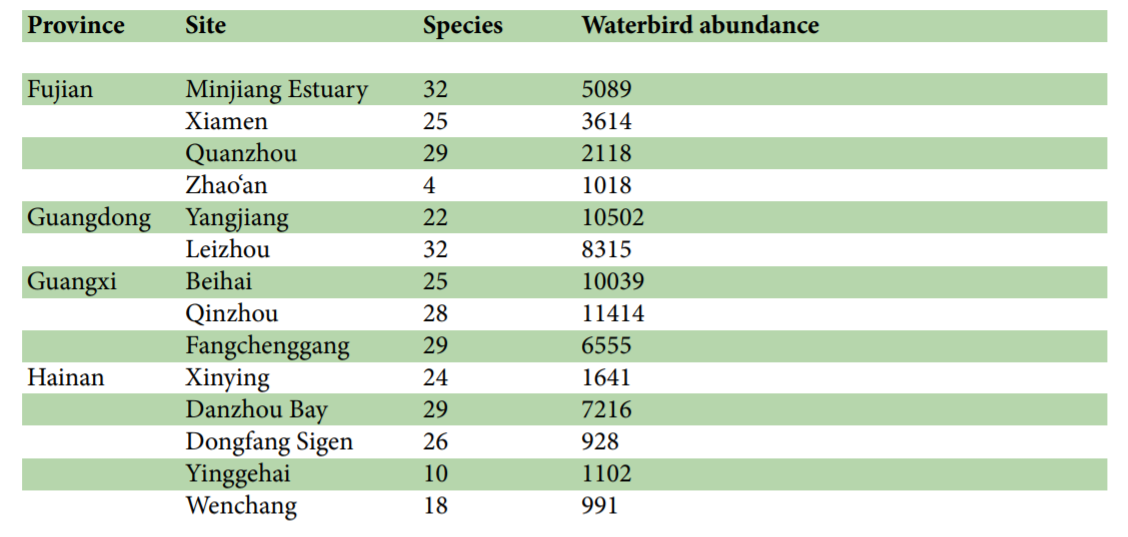
Conclusion
Long-term monitoring can provide important data for waterbird population and habitat quality assessment, it is also the basis of adaptive wetland management. In January 2021, we recorded 61 SBS in total (16 with engraved flag). 21% of the survey locations were found within protected area (Leizhou, Xinying, Haifeng, Minjiang Estuary), and 59% of the SBSs were found in these areas. Local NGOs has also paid attention to some of the sites under no protection but with the high biodiversity like Danzhou Bay, Sanxinsha Island. This combination of NGOs and protection force from government provides a good reference for future conservation work.
From the feedback of observers, illegal hunting has been dramatically reduced in recent years, due to the strengthening of law enforcement and amending the wildlife protection laws in 2021. But human disturbance from tourism, aquaculture, and marine products collection raises new concerns. Collaborative conservation work is in need to mitigate these threats.
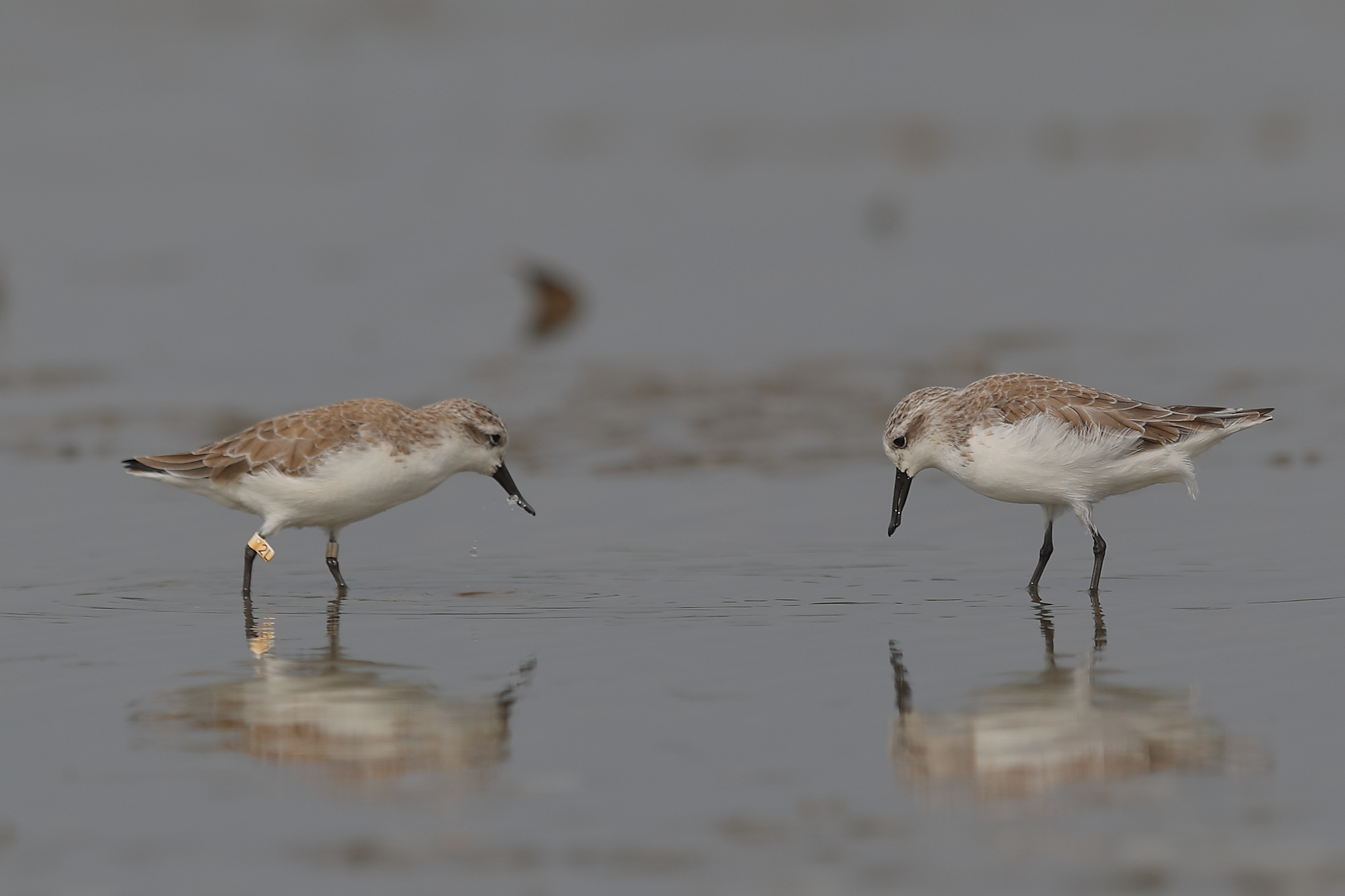
ⓒ Cheng Li
*Article by Chen Qing on behalf of the Spoon-billed Sandpiper Alliance
Article reprint from May 2021 Spoon-billed Sandpiper Task Force newsletter with permission.
Read the May 2021 Spoon-billed Sandpiper Task Force newsletter, click [here].




